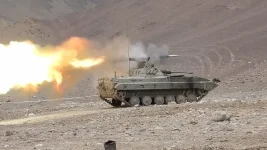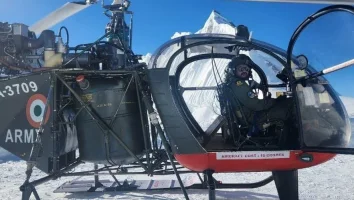- Views: 1K
- Replies: 6

A recent encounter in Akhnoor has revealed a significant shift in the Indian Army's counter-terrorism strategy in Kashmir. The operation, which successfully neutralized a large group of heavily armed Pakistani terrorists, saw the innovative deployment of BMP-2 armored vehicles and unmanned reconnaissance vehicles alongside specialized canine units.
This marks a departure from traditional counter-terrorism operations in India, which have typically relied primarily on specialized infantry units.
The need for this change in strategy stems from the evolving tactics of Pakistani-backed terrorist groups, who have increasingly resorted to ambushes and complex attacks. The use of BMP-2 Infantry Fighting Vehicles provided troops with enhanced protection and increased firepower, allowing them to engage the enemy from a safer distance and minimize casualties. Unmanned reconnaissance vehicles played a crucial role in providing real-time intelligence, enabling troops to assess the situation and plan their response effectively.
In recent months a spate of attacks on Army convoys and the use of deadly traps by terrorist groups, had resulted in significant casualties. By prioritizing the safety of its troops through the use of heavy armor and advanced technology, the Indian Army aims to disrupt these tactics and make it considerably harder for terrorists to execute surprise attacks.
The Akhnoor encounter is being seen as a turning point in India's counter-terrorism operations. The deployment of armored vehicles against terrorists, a rare occurrence in the region, highlights the evolving nature of the threat and the Indian Army's adaptability in response. As the security situation in Jammu and Kashmir remains volatile, this willingness to employ unconventional tactics underscores the Army's commitment to safeguarding national borders and neutralizing threats.
This strategic shift aligns with a broader trend observed globally, where armed forces are increasingly utilizing technology like drones and AI in counter-terrorism operations. Experts suggest that these technologies can enhance situational awareness, improve targeting accuracy, and minimize civilian casualties.
While the long-term effectiveness of this strategy remains to be seen, it signals a clear intention to prioritize the safety of troops while effectively combating terrorism.



